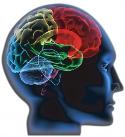Advanced MRI for Monitoring High-Grade Glioma Treatment Response
 Researchers evaluating the use of advanced MRI techniques report that dynamic susceptibility contrast (DSC) MRI is the most proven of all advanced methods currently practiced in Europe for monitoring treatment response in high-grade brain tumors. The comprehensive review was published in Frontiers in Oncology by a team of clinicians, engineers, and physicists working on behalf of the European Cooperation in Science and Technology (COST) Glioma MR Imaging 2.0 (GLiMR) Initiative. Imaging Biometrics’ software modules, IB Neuro and IB DCE, provide solutions for analysis of this data, with examples from each included in the paper.
Researchers evaluating the use of advanced MRI techniques report that dynamic susceptibility contrast (DSC) MRI is the most proven of all advanced methods currently practiced in Europe for monitoring treatment response in high-grade brain tumors. The comprehensive review was published in Frontiers in Oncology by a team of clinicians, engineers, and physicists working on behalf of the European Cooperation in Science and Technology (COST) Glioma MR Imaging 2.0 (GLiMR) Initiative. Imaging Biometrics’ software modules, IB Neuro and IB DCE, provide solutions for analysis of this data, with examples from each included in the paper.
The study acknowledged the limitations and challenges presented with conventional MRI and specifically noted the quantitative technology contained in IB Neuro termed “standardization”. This exclusive technology is built into IB Neuro and automatically generates standardized relative cerebral blood volume (sRCBV) maps. And, as the paper cites, IB Neuro’s sRCBV has demonstrated greater consistency and improved repeatability over inherently variable and manual “tissue normalization” approaches.
“Standardization is significant because it allows for direct comparison between scans independent of MR scanner platform, field strength, or patient,” said Michael Schmainda, CEO of IB. “This paper nicely summarizes the advancements made over the years in advanced MRI techniques, and we are pleased that the sRCBV technology available in IB Neuro was highlighted,” added Schmainda.
Related Articles
Citation
Advanced MRI for Monitoring High-Grade Glioma Treatment Response. Appl Radiol.
March 9, 2022